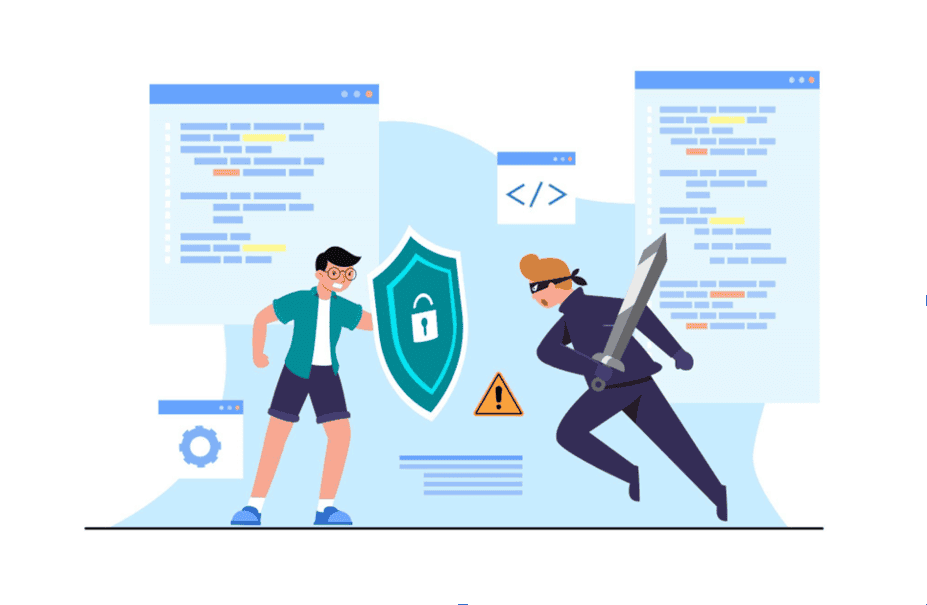Secure coding is a software security best practice that helps protect data and applications from cyber threats. These best practices range from security testing to authentication, encryption, and monitoring. Safeguarding user data and privacy is important in business operations. The practice prevents breaches and protects the company’s reputation and losses. Secure coding considers data and privacy protection from the start of the development lifecycle.
Ready to safeguard your software and protect your users? Start implementing secure coding practices today and ensure your applications are built to withstand the challenges of tomorrow. Learn more and take the first step toward stronger security now!
What does secure coding mean?

Secure coding means to write software with security needs in mind. This is done to protect the program from common vulnerabilities. Development teams do not design security structures when launching a program but do it from the first phase. Several activities accompany the development process to ensure the end product is safe. This includes encryption, testing, and validating inputs.
Software development teams follow several web security best practice guides during development. OWASP code review guide is popular among developers due to its simplicity. But the question is what is OWASP and how does it apply in coding? The OWASP community assists developers by providing them with guidance on how to write clean code. For instance, the OWASP Top 10 serious web app vulnerabilities are an OWASP example. Every developer ought to be aware of what is OWASP and how it is used in software development.
How secure coding helps in data and privacy protection
According to research on digital transformation, businesses invested $2.15 trillion in this area in 2023. By 2027, spending is predicted to reach $3.9 trillion. There are 370 leading digital platforms and more than 5.35 billion internet users. Data breaches rise in proportion with the expansion of digital services.
Web security best practice assists developers in addressing vulnerabilities before they become issues. Beyond monetary loss, exposed data causes significant harm. To avoid these outcomes, secure coding is essential.
Compliance with laws and guidelines
Developers must adhere to several safety standards that have been released by various organizations. These organizations agree and publish several data protection regulations and standards that need to be adhered to. One way to adhere to these rules is by using web security best practices. These statutes include, for example:
- GDPR. By using authorization, encryption, and authentication, this guideline guarantees that developers safeguard code. It calls on developers to use secure coding techniques and data security.
- HIPAA. Organizations are required under HIPAA to report breaches, create a compliance plan, and evaluate risks. It mandates that developers establish a plan for HIPAA compliance and do risk analysis when developing.
- PCI-DSS. Organizations must manage access and safeguard cardholder data under PCI-DSS. Businesses must set up safe networks and control vulnerabilities.
- OWASP. To make sure developers are aware of the most common vulnerabilities, OWASP releases a handbook. They must establish systems to guard against these weaknesses.

Reduces vulnerabilities
One recommended practice for software security that aims to lessen software dangers is secure coding. Developers accomplish this software security best practice using a variety of tests and fixes. They keep looking for vulnerabilities in the code that hackers could take advantage of. The most frequent vulnerabilities include buffer overflows, SQL injections, XSS, infections, phishing, and malware.
Finding and fixing these problems during development is the aim of secure coding. The likelihood of flaws and vulnerabilities after the product launches is decreased by early prevention. It enables programmers to create a robust product that is difficult to compromise.
Builds trust
Software that users cannot trust cannot be adopted. If customers believe their data is secure and the program is safe, they won’t have any issues using it. By being open and honest about their development process, organizations gain the trust of their users. They offer details on the software’s security frameworks and testing procedures.
To increase user trust, businesses develop and publish updates frequently. Organizations demonstrate their responsibility and concern for user safety by implementing secure coding. The business gains more customers and revenue as a result of this trust.
Better code quality
The goal of secure coding is to adhere to stated compliance rules and development practices. Continuous testing and deployment, for example, assist in finding and eliminating flaws, errors, and other vulnerabilities. As a result, developers produce code of unimaginable perfection. An organization can benefit from higher-quality code in several ways.
- The code doesn’t need to be fixed as frequently and registers fewer faults.
- Users report increased productivity as a result of improved program functionality.
- Its greater dependability rate increases user confidence.
- It produces a safer code that supports privacy and data security.
- Fewer mistakes and resilience to breaches result in lower maintenance expenses for the business.
Enhanced data protection and governance
When developing and using software, data protection is essential. To improve data security, developers include security features like multi-factor authentication and encryption. These safeguards help in the protection of user data, including academic work, insurance, medical records, and banking data.
Secure coding enhances the security and integrity of data while promoting best practices for data protection. It supports legislation on data analysis, access, sharing, and storage. Implementing access controls throughout development, for example, guarantees that information is not accessed by unauthorized individuals.
Secure coding best practices
Developers implement a variety of methods and best practices while writing secure code. For example, input validation verifies the security of data entered into the code. Static code analysis checks for flaws and parameterized queries stop malicious injections. To guarantee code quality and security, development teams adhere to a variety of coding best practices. These consist of the least privilege principle, threat modeling, frequent reviews, and updates.
Conclusion
Enhancing code safety and safeguarding user information and privacy are the two main objectives of secure coding. These days, more people use digital services, which has led to more hacker attempts. Software makers must put forth more effort to safeguard user data and lessen online dangers. Coding standards help developers create dependable software that inspires customers’ confidence and trust. It is a great way to promote online security and defend against threats.

